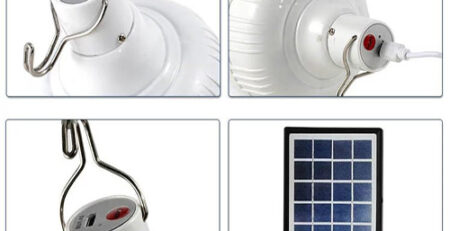Renewable Solar Energy
It is thought that by the middle of this century the sun could provide 10% of the UK’s energy needs. Over the course of a year the sun beams down between 900 and 1,200kWh per square metre – hard to believe on a wet and windy winter’s day – and can be utilised to either generate electricity via PV panels (photovoltaics) or hot water with solar thermal panels.
PV Panels
PV panels generate energy from the sun. Without getting too technical, photons of light transfer their energy to electrons in a silicon crystal and generate a direct current with an equivalent voltage of 12V. This is then put through an inverter to make it suitable for 240V circuits.
The panels are ideal for buildings that use a lot of electricity in the daytime, such as offices, but should never be viewed in isolation, because the electricity they generate requires expensive batteries to store.
The average PV panel has an output potential of 1.5 to 2kWp. This is enough to provide about a fifth of an average home’s annual electricity requirements. However, energy production does vary seasonally and has an impact on costs of electrical fittings. At the height of the summer, full output may be capable of supplying all of a building’s needs.
Three types of system are available:
Monocrystalline panels are the most effective harvesting about 15% of the full energy potential – the rest is lost in the conversion process; Polycrystalline panels are less efficient, harvesting 13% of the potential energy; and Thin-film amorphous silicon panels just 7% – only really viable on buildings with a huge expanse of roof.
Providing the panel is set at the same pitch as the roof and does not stand too proud of the roof profile, planning permission should be granted. It is, however, worth checking a local authority’s past record on these issues.
Once installed, short of an occasional wipe clean, there are no running or maintenance costs and panels should last for upwards of 30 years.
Until now the uptake of PV panels has been low. This is largely because the payback period can be very long term – anything from 60 to 120 years – as the UK energy industry pays such a low rate for any energy sold back to the grid.
Elsewhere in Europe, some countries require that electricity is bought back at three times the rate that is paid for it, so significantly reducing payback times and increasing adoption of the panels.
Solar Thermal Panels
In Europe, the solar heating market grew by 18% in 2005. By 2010 in the UK there are expected to be 25,000 new domestic solar water heating installations, rising to 75,000 by 2020.
Solar water heating systems gather energy radiated by the sun and convert it into useful heat in the form of hot water. As hot water requirements are minimal in offices, its main use is in domestic developments where it can provide almost all of a property’s hot water during the summer months and about 50% throughout the year, according to the Energy Saving Trust. It can also reduce CO2 emissions by between 0.4 to 0.75 tonnes per year, depending on the fuel replaced.
There are two types of system available Flat plates are the cheaper, less efficient option. These glazed usually rectangular shaped panels, work best on hot days and use a metal absorber plate, which is in contact with water pipes.
Evacuated tubes are more efficient and hence, more expensive. Their energy is derived from light, which enters a ‘vacuum flask’ type of glass tube and is converted into heat in the water through contact with an absorber such as black paint.
Both systems pump the heated water (mixed with antifreeze) through heat exchangers that are connected to hot water tanks.
Panels range in size from 0.7m² to 8m² – evacuated tubes normally take up less space. Most manufacturers will normally suggest one panel will provide a home with two-thirds of its annual hot water needs.
Flat plate panels should be expected to last between 10 to 25 years and evacuated tubes for 20 to 35 years. Pay back is normally about 10 years.












Leave a Reply
You must be logged in to post a comment.